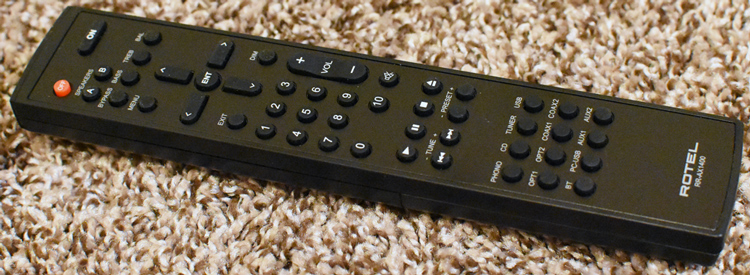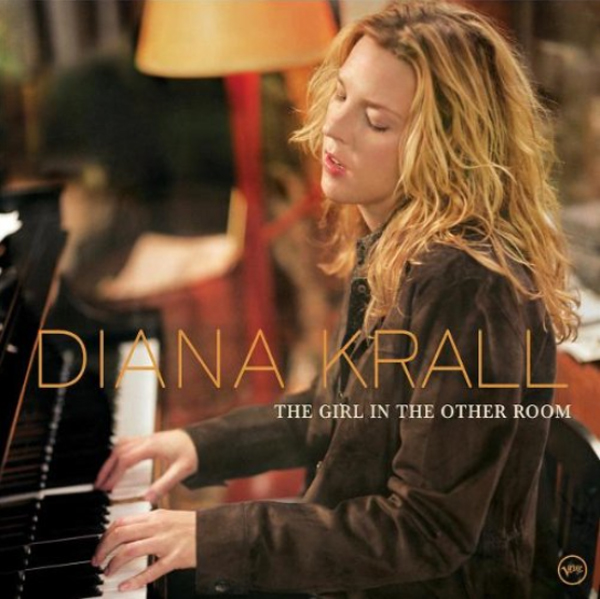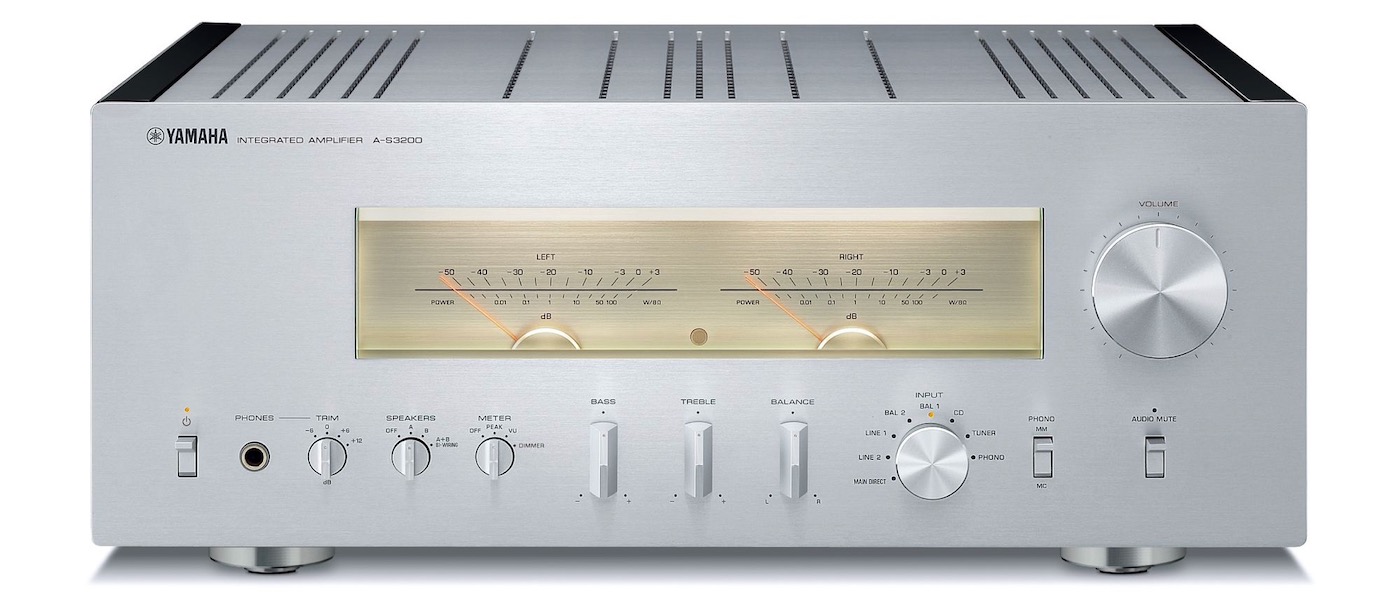
With its capability of processing digital signals on top of the analog ones, the Rotel A14 is not your traditional integrated amplifier. It is essentially a one-chassis unit combining an integrated amplifier and a DAC, which is supported by an AKM 32-bit/768-kHz chip. On top of that, the A14 also sports a wireless feature in the form of Bluetooth with aptX streaming. Rotel equips the A14 with a solid power supply supporting class AB amplification rated at 80 watts per channel into 8 ohms with both channels driven.
Rotel A14 Integrated Amplifier
- Modern integrated amplifier, which includes DAC and Bluetooth wireless features.
- DAC can handle PCM (up to 32-bit/384-kHz) and DSD signals (up to 5.6 MHz).
- Handsome-looking product with good build quality and finish.
- Quite powerful onboard amplifier.
Part of Rotel’s reputation has always been about value and this principle is reflected well in its products, which often carry a high performance-to-cost ratio. Much of the company’s success and staying power can be attributed to this very principle. Rotel is often the brand to go to build a high-performance audio system on a budget.
The A14, a modern integrated amplifier reviewed here, is one of the realizations of the Rotel value principle. I call it a modern integrated amplifier because unlike the traditional analog-only integrated amplifier, the A14 can handle both digital and analog signal switching. It has a built-in Digital-to-Analog Converter (DAC), which nowadays is an important element in many hi-fi systems as more digital sources become mainstream. On the analog side, besides line-level inputs, the A14 is also equipped with an MM phono feature to accommodate vinyl playback. The stereo onboard amplifier of the unit can deliver 80 watts per channel into 8 ohms load, which should be sufficient for most applications. Considering its comprehensive features, the A14 is priced attractively at $1499.
Analog Section
Continuous Power Output:
80 watts/ch (20 – 20k Hz, < 0.03%, 8 ohms)
Total Harmonic Distortion (20 Hz – 20k Hz, 8 ohms):
< 0.03%
Frequency Response:
Phono Input:
20 Hz – 20k Hz, ± 0.5 dB
Line Level Inputs:
10 Hz – 100k Hz, ± 0.5 dB
Damping Factor (20 – 20,000 Hz, 8 ohms):
220
Input Sensitivity / Impedance:
Phono Input:
3.4 mV / 47k Ohms
Line Level Inputs:
230 mV / 24k Ohms
Tone Controls:
Bass / Treble ± 10 dB at 100 Hz / 10 kHz
Signal to Noise Ratio (A weighting):
Phono Input:
90 dB
Line Level Inputs:
100 dB
Digital Section
Frequency Response:
10Hz – 80k Hz (± 3.0dB,MAX)
Signal to Noise Ratio (A weighting):
103 dB
Digital Inputs:
SPDIF:
PCM up to 24 bit/192 kHz
USB Audio Class 1.0:
PCM up to 24 bit/96 kHz
USB Audio Class 2.0:
PCM up to 32 bit/384kHz, DSD and DoP support
General
Power Requirements:
120 V, 60 Hz
Power Consumption:
280 Watts
Dimensions (W x H x D):
430 x 93 x 345 mm (17” x 3 5/8” x 13 1/2”)
Weight (net):
8.2 kg (18 lbs)
MSRP:
$1499
Website:
Company:
SECRETS Tags:
rotel, a14, integrated, amplifier, stereo, hi-fi, Amplifier Review 2020
The Rotel A14 integrated amplifier has a full-width chassis (17”) and slim appearance with its low-height profile (less than 4”). The design of its aluminum front panel with its round pushbuttons and smoothed round volume knob looks modern and appealing. The review sample comes in a silver finish, which I think is more eye-catching than the black-finish ones. The build quality of the amplifier is overall very good.
The front panel landscape of the A14 is relatively neat. A rectangular display occupies the middle area of the front panel. Besides the power on/off button and the volume knob, there are a row of push-buttons on the lower part of the front panels, which can be categorized into three groups based on their functions: input source selector, speaker selector switch (A, B, or both), and menu/up/down buttons. The front panel also sports a USB socket for iOS device connection and a mini headphone jack.
Secrets Sponsor
Besides the power-cord receptacle, the rear panel of the A14 features a plethora of input/output connectors. On the analog side, the A14 can accommodate 4 stereo line-level inputs and a MM phono input. A set of line-level preamp-outs is available, which can be used for connection to an external amplifier or powered subwoofer. All these connections are of the single-ended type. On the digital side, the A14 can accept two coaxial (SPDIF), two optical (Toslink), and a USB (labeled PC-USB) inputs. Two sets of stereo speaker-level outputs are provided for easy bi-wiring applications. Either one or both sets can be made active by using the speaker selector on the front panel. These speaker connectors can accept bare wire, spade lug, or banana plugs. Some accessory connectors on the rear panel include a pair of Rotel Link in/out (for communication and control of other Rotel-Link equipped products), an EXT REM socket (for receiving command codes from industry-standard infra-red receivers using hard-wired connection), RS232 connector (for integration with automation systems), LAN socket (for network connection to allow software update through the internet or integration with automation systems), USB power port (for charging or powering USB devices), and two 12V DC triggers (for automatically turning on/off external components equipped with DC trigger feature).

The Rotel A14 uses the AKM 32-bit/768-kHz DAC chip for its digital-to-analog processing, hence it can handle high-resolution music signals under the constraints of the connection limitation. Using its PC-USB connection, the A14 can process up to 32-bit/384-kHz PCM music files, while using the coaxial/optical connection, it can handle up to 24-bit/192-kHz PCM signals. Only the PC-USB connection has DSD and DoP support.
The A14 also has the added convenience of being able to wirelessly stream music using Bluetooth with aptX enhancement. With this feature, users of Spotify, Tidal, Qobuz, or other streaming services can stream music through the A14. Although high-resolution files will not be processed at its native resolution and rates due to Bluetooth transfer speed limitation, but at least with the aptX feature, music playback close to the CD quality can be achieved.
The onboard amplifier of the A14 is class AB and rated at 80 Watts of continuous power per channel into an 8-ohm load with both channels driven. The specification sheet states that the minimum speaker impedance for use with its onboard amplifier is 4 ohms, which indicates that the amplifier is not designed to handle exceedingly difficult speaker loads (with an impedance that dips way below 4 ohms).
The information on the A14 front display is shown in black letter/number digits on a white background. In a playback situation, it shows the source selected, volume level, and tone settings, or digital signal rates. In the setup mode, the display provides access to the setup and configuration menu options of the unit. The brightness of the display can be adjusted permanently from the menu system or temporarily using the Dim button on the remote. There are 7 levels of brightness adjustment and during my review application, about the middle level of brightness setting (level 3 or 4) was usually sufficient. There is no option to turn off the display completely. The small LEDs on top of the Power On/Off button (blue color when the unit is On and red when it is on standby) and speaker selector switches (blue when selected) can also be dimmed. These LEDs also have 7 levels of dim setting, and its lowest setting was my preference. I like the appeal that these blue LED indicators bring when the unit is in operation, but I do not want them to be too bright.

The A14 is supplied with a good-size slender infra-red remote control, which can be used to control most functions of the unit, including power on/standby, speaker selection, input source selection, menu access, display dimming, and volume adjustment. The remote control is not backlit, but overall, it is quite convenient to use. I found that the unit was quite responsive to the commands from the remote control.

The A14 comes with a nicely written manual, which can be handy as a guide for operating some of its advanced features. The manual may not be needed just to start it up as only a minimum setup is needed. Just plug in the analog and digital music sources that you have to the appropriate inputs and connect the speaker outputs to a pair of speakers, and you are ready to enjoy the music. The default setting bypasses the tone control, and this was the setting I used most of the time. This tone-bypass feature can be defeated through the settings menu if one needs to adjust the bass or treble levels of the playback. The settings menu, which can be accessed by pressing the Menu button on the front panel or the remote control, also provides balance setting, display and LED dim control, off-timer setting, and fixed-volume assignment to specified inputs. When activated, this fixed-volume feature disables the volume level adjustment through the volume knob on the front panel and volume +/- buttons on the remote control. This feature can be useful for home-theater bypass, allowing the surround processor to take control of the volume level of the signals passed through to the A14 amplifiers.
During the review, although the A14 amplifier spent most of its time in my main system, I inserted it into several other systems available at my home to see how it performs in various application settings. The A14 easily showed its versatility by comfortably handling various playing partners. The speakers paired with the A14 during the review were the Revel Ultima Studio in the main system, the NHT Evolution T6, the Onix Rocket RS250, and the Sony SS-K10ED. None of these speakers, which have nominal impedances between 6 to 8 ohms, present a too difficult challenge for the A14 to drive. The most power-hungry among these are probably the Revel Ultima Studio pair, but with its 80 W rated power per channel into 8-ohm loads, the A14 never seemed to lose its poise driving them. The A14 may become rather warm to the touch when pushed hard, but with enough ventilation, it should be alright.
The digital sources I used during the review were Auralic Aries G1 streamer, Dell XPS13 laptop with 64-bit Windows 10 Pro OS, and PS Audio PerfectWave Transport. The Aries G1 and PerfectWave Transport were also used to generate analog input signals through the PS Audio PerfectWave DAC II. Occasionally, I used my LG V30 mobile phone too to test its Bluetooth performance. The Rega Planar 1 turntable and the Massdrop X Sennheiser HD6XX headphones were used to evaluate the A14’s phono and headphone performances.
All in all, the Rotel A14 is a competent performer, handling all the things it is supposed to do well. It was a smooth operator too, as I did not find any quirk or glitch in switching through the various types of inputs and playback control. The Rotel A14 is one of the few integrated amplifiers that offers the convenience of the wireless Bluetooth playback. Within the Bluetooth transfer-rate limitations, I would say that the Bluetooth playback performance of the A14 was a step up in fidelity than what was found in most mass-market AV receivers. So, if this feature is important to you, the A14 should be in your list of integrated amplifiers to consider.
Secrets Sponsor
One of the advantages of the modern integrated amplifiers like the A14 as compared to the traditional ones is the ability to handle digital signal switching. The A14 performed such switching swiftly and had no issues in decoding the digital signal inputs within its specifications. The USB input was recognized immediately by the Auralic Aries G1 as Rotel USB 2.0, so no further setup was needed to use this connection with the Aries G1. Although the manual said that to take advantage of the USB2.0 feature with a Windows laptop, the driver would need to be installed from the included CD, my Dell XPS13 laptop seemed to recognize the Rotel USB 2.0 audio feature and installed the correct driver automatically from the internet. The sampling rates of the signal played were shown on the A14 display and I noticed that it played the PCM music files in their native resolution up to 384 kHz. Although it is not specifically mentioned in the product specification, during my trial I found that the A14 had no problem in playing back DSD music files up to 5.6 MHz through the USB connection. Hence, the A14 is quite up to date in its capability of decoding the digital music signals.
The music playback through the A14, in general, sounded quite open, detailed, and crisp. Also, the amplifier was quite adept in conveying the sense of space and musical soundstage. The track Pineapple Getaway by Fourplay from their album Let’s Touch the Sky (2010) sounded relaxed yet lively through the A14. Various instruments in the track sounded natural with discernable image separation among them in a good-size soundstage portrayal. The amplifier had a knack for presenting instruments’ sonic textures with its crisp transients. The plucking of the guitar strings in the track was so palpable and lifelike. The bass produced by the A14 through the Revel Ultima Studio was not the most extended, but nevertheless, it sounded impactful and tight. I like the fact that the A14 was quite nimble and thus never makes music sound lazy in its presentation.

Fourplay “Let’s Touch the Sky”
When I used the A14 in my main system driving the Revel Ultima Studio speakers in its normal tweeter setting (the Ultima Studio has tweeter-level adjustment), I noticed a slight trace of brightness in its sonic characteristics regardless of whether the input source was digital or analog. However, this was not at the level that was obtrusive to the musical enjoyment, and depending on your sound taste, the tilt towards the bright side might be desirable. It highlighted more the high-frequency element in the music, which in some cases made the overall musical presentation livelier.
However, with it also came a slight glare, which sometimes noticeable on the edges of female vocals. For example, on the track The Girl In The Other Room from the album of the same title (2004), I heard slightly sharp edges around Diana Krall’s voice and sibilance. They did not detract me from the musical experience of the track, but nevertheless, their presence was noticeable. Reducing the front-tweeter level by 1 dB using the switch on the back of the Ultima Studio somewhat remedied the situation, which shows that the A14 is more suitable to be paired with warmer sounding speakers. Indeed, I felt that the A14 was more at home being paired with the Rocket RS250 speakers, which have warmer sonic characteristics than the Ultima Studio, leading to a more balanced top-to-bottom tonal presentation.

Diana Krall “The Girl in the Other Room”
The phono stage of the A14 was respectable. It was not in the top-end of the spectrum in terms of phono performance; however, it was no slouch either. From my recollection, vinyl sounded better through the A14 than through the phono stage of some mid-range AV receivers from Marantz and Denon that I reviewed recently. On the Supermarket Flowers track from the Divide album (2017), Ed Sheeran’s vocal sounded natural and full-bodied. Overall dynamics were good, although I felt that presentation of the musical texture could be better.

Ed Sheeran “Divide”
Finally, I found that the music listened through the Massdrop X Sennheiser HD6XX headphones connected to the A14 headphone jack sounded balanced across the frequency spectrum with sufficiently good details and clarity. On some intense musical passages, some slight harshness was noticeable. However, this was less obvious when less-revealing headphones were used. I should note that unlike the feature found in many pieces of equipment out there, plugging the headphone jack to the A14 does not automatically cut off the signals to the speakers.
The speaker selector button on the remote control or front panel can be used to turn off the speakers while playing music through the headphones.
The ROTEL A14 is a good value integrated amplifier that accommodates analog as well as digital sources and a competent performer.
- Handsome looking and excellent build quality
- Performs all its functions well
- Handles both analog and digital signals
- DAC is capable of up to 384 kHz PCM and 5.6 MHz DSD signals
- Good sonic performance
- Some networking capability
- Backlit remote control
The Rotel A14 is an overall competent modern integrated amplifier with a slight sonic tendency towards the bright side of neutral. It is loaded with features and equipped with a sufficiently powerful amplifier. With onboard DAC capable of handling high-resolution PCM and DSD signals, a respectable phono stage and headphone amplifier, as well as a good Bluetooth playback feature, this slim looking amplifier can serve adeptly as the centerpiece of a stereo music system comprising of analog and digital sources. The Rotel A14 does bring versatility and quality that justify its price tag.


